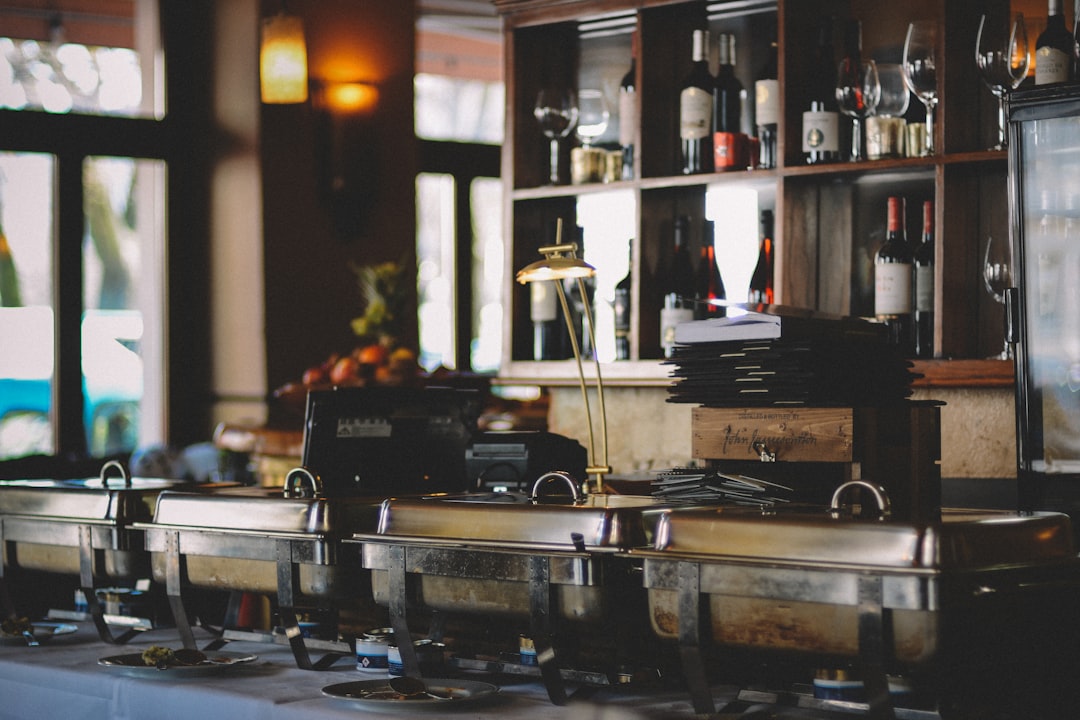Inventory waste is profit walking out the door. If your counts live in a spreadsheet and your POS can't see your stock, you're guessing. Let's fix that—with practical steps and the right software setup to cut waste and control costs.

What inventory management in a restaurant really means
- In plain terms: it's the system for tracking every ingredient, beverage, and supply from purchase to plate, so you minimize waste and optimize food cost.
- Core functions include purchasing and vendor ordering, recipe costing and portion control, real-time waste tracking, stock valuation and COGS, and par-level management for reordering. See industry guidelines from the National Restaurant Association for scope and standards.
Why unified POS and delivery integrations change the game
When your inventory engine speaks directly to your POS and delivery channels, you get fewer surprises and tighter control:
How Spindl fits: real-time analytics and one device for POS + delivery
Spindl consolidates POS, built‑in delivery apps, online ordering, loyalty, and analytics into one device—so sales, orders, and inventory live in one flow. That means fewer miscues, faster counts, and cleaner COGS. Explore pos software and unified analytics on the Spindl features page. Or learn what the platform is about here.

The 5 practical steps to implement restaurant inventory management software
1) Map your menu to recipes and yields
- Standardize recipes with measured portions. Link every PLU to ingredients and true yields. This is where "hidden" food costs surface.
- Tip: weigh cooked yields for proteins; don't assume raw-to-plate ratios. Think of it like forensic accounting for your food—that ribeye might look like a pound raw, but after cooking and trimming, you're serving 10.5 ounces. Tracking actual yield prevents pricing mistakes that erode margins.
2) Standardize counts and storage
- Create a single source of truth: shelf-to-sheet counting order, labeled shelves, and location-specific count sheets.
- Use digital scales daily for high-cost proteins; this can reduce counting errors by about 30% compared with visual estimates (National Restaurant Association Guidelines).
- Consider color-coding your storage areas to match your digital count sheets—red for proteins, blue for produce, yellow for dry goods. This visual system reduces confusion during rush counts and trains new staff faster.
3) Set pars and reorder points from 30-day sales data
- Let your software calculate pars and reorder points automatically using recent velocity. This prevents most stockouts when maintained consistently (Supy Best Practices).
- Remember that seasonal fluctuations matter—a seafood restaurant near a beach town might need 40% higher pars in summer months. Good systems adjust dynamically based on historical patterns and upcoming reservations.
4) Track waste in real time
- Log prep trims, spoilage, and comps directly in the POS at the moment they happen; real-time logging identifies roughly 22% more waste sources than manual logs (Rezku Case Studies).
- Create a "waste station" with a digital scale connected to your system. When a prep cook trims 2 pounds of fat from ribeyes, they log it immediately. This granular data reveals where your food cost is actually going.
5) Close the loop with vendors and invoices
- Receive against POs at the door, rate suppliers on accuracy and timeliness, and reconcile invoices monthly. Teams that track supplier performance see up to 40% fewer shortage disputes (Food Market Hub Trends).
- Consider implementing a three-strike policy with vendors—after three documented delivery errors, it triggers an automatic review of the relationship. This accountability creates a virtuous cycle of better deliveries.
Common inventory methods (and when to use each)
- Perpetual: Continuous updates as sales and receiving occur. Best for multi-unit and delivery-heavy operations. Pairs perfectly with POS integration.
- Periodic: Full counts at set intervals (weekly/monthly). Lower-tech, but higher variance risk.
- Barcode scanning: Speeds counts and improves accuracy; mobile mode is ideal across locations.
- RFID (select items): Useful for high-value goods and liquor; reduces shrink and speeds audits.
See our deeper dive on the four pillars and daily practices: restaurant inventory management best practices.
How to choose inventory software: features you actually need
- POS + delivery integration in one device: Syncs sales, modifiers, and delivery orders to inventory in real time to eliminate double entry. Spindl's built-in delivery apps manage menus and orders centrally: pos software.
- Recipe and menu engineering: Cost every dish dynamically; highlight low-margin items so you can reprice, resize, or retire.
- Predictive ordering and pars: Suggests purchase orders based on sales velocity and seasonality.
- Real-time waste capture: Log spoilage, over-prep, and comps at the POS.
- Mobile counts and offline mode: Count in fridges, freezers, and cellars without signal.
- Multi-location controls: Centralize recipes, approvals, and reporting; localize vendor lists and pricing.
- Vendor portal + invoice reconciliation: Receive against POs; flag price variance automatically.
- Analytics and alerts: Food cost %, COGS, variance, usage, dead stock, and stockout alerts delivered in real time. Spindl's AI analytics can answer questions about your own data: pos software.
Feature set and pricing: all-in-one vs. inventory-only vs. POS add-ons
All-in-one platforms (Spindl-style)
- Strengths: Unified POS, delivery, online ordering, loyalty, and analytics in one device; real-time inventory, recipe costing, vendor ordering, mobile counts, and cross-channel insights.
- Pricing: typically $150–$400/month depending on modules and locations. For context, leading operational suites like Supy list around $299/month: Supy Best Practices.
Dedicated inventory-only tools
- Strengths: Deep inventory features and costing; lighter on POS/delivery integrations.
- Pricing: commonly $50–$150/month. MarketMan advertises plans around $99/month.
Generic POS add-ons
- Strengths: Basic stock decrementing and simple counts; limited recipe/waste analytics.
- Pricing: $20–$100/month as an add-on. Example: Toast's inventory add-on starts near $79: Toast Inventory Features.
What this means for your P&L
- If you run complex menus, delivery channels, and multiple locations, the integration overhead alone often justifies an all-in-one. Expect 3–5% food cost improvement and 5–7 hours of weekly labor savings with real-time, unified systems (National Restaurant Association Guidelines; LLC Buddy Market Stats).
- If you're a single-site with a tight, stable menu and minimal delivery, a dedicated tool or add-on can work—just be realistic about manual glue work between systems.
Daily and monthly inventory checklists
Daily (10–20 minutes)
Weekly
- Update par levels for seasonal or promo-driven menu items (Food Market Hub Trends).
- Audit top variance items and retrain on portion tools if needed.
Monthly (60–120 minutes)
Quick answers to common questions (People Also Ask)
What is inventory management in a restaurant?
It's the end-to-end control of food, beverage, and supplies—from purchasing to POS—to minimize waste and improve margins. See National Restaurant Association Guidelines.
How to manage inventory for a restaurant?
Standardize recipes and counts, implement FIFO with clear date labels, set pars from 30-day sales, log waste in real time, and reconcile invoices monthly. These steps reduce errors, spoilage, and stockouts (National Restaurant Association Guidelines; Supy Best Practices; Rezku Case Studies).
What are the 5 steps of inventory management?
- Standardized counting protocols, 2) FIFO, 3) Par-level setting, 4) Automated waste logging, 5) Supplier performance tracking—each linked to measurable gains (National Restaurant Association Guidelines; Toast Inventory Features; Supy Best Practices; Rezku Case Studies; Food Market Hub Trends).
How to inventory monthly as a restaurant manager?
Perform a complete physical count using scanners, reconcile inventory value to accounting, analyze waste trends, and validate invoices against receiving logs (LLC Buddy Market Stats; National Restaurant Association Guidelines; Supy Best Practices).
How much inventory should a restaurant carry?
Aim for tight turns. Many concepts target 4–8 inventory turns per month; use par levels tied to recent sales and lead times to prevent overstocking. The SBA's Food Cost Calculator can help model COGS: SBA Food Cost Calculator.
What inventory method do restaurants use?
Most high-performing teams adopt perpetual systems integrated with POS, supplemented by weekly or monthly physical counts. Others use periodic counts, barcode scanning, or RFID for select items (restaurant inventory best practices).
What is the type of inventory in a restaurant?
Broadly: perishable food, non-perishable dry goods, beverages (including alcohol), and disposables (to-go containers, napkins). Many operators also track smallwares and cleaning supplies for shrink control (National Restaurant Association Guidelines).
What are the 4 main types of inventory?
For restaurants, think in operational pillars: perpetual, periodic, barcode-enabled, and RFID-assisted tracking. Perpetual with POS integration is the gold standard for real-time control (restaurant inventory best practices).
Who is responsible for inventory in a restaurant?
Typically the GM or kitchen manager owns the process, with counts executed by two staff members to reduce bias. Multi-unit brands assign an area or ops manager for oversight and audits (leadership skills for restaurant manager).
How to do inventory count in a restaurant?
Use shelf-to-sheet order, weigh high-value items, scan barcodes, and reconcile against theoretical usage from POS. Count before service or after close for accuracy; log variances and investigate immediately (LLC Buddy Market Stats; Toast Inventory Features).
How real-time analytics reduce stress and labor burden
Inventory chaos fuels burnout and turnover. Better systems streamline work, cut rework, and stabilize shifts—vital when you're understaffed. See how technology reduces operational pressure: restaurant staff stress problems and understaffed restaurant.
Objections you might have (and what the data says)
- "Too expensive for a small restaurant."
- 73% of operators pay under $150/month, with ROI in about three months from waste reduction alone (LLC Buddy Market Stats).
- "My team won't adopt new tech."
- Modern mobile interfaces cut training to under an hour; 82% of teams prefer digital to spreadsheets (Toast Inventory Features).
- "My POS already tracks sales."
- "Manual counts are accurate enough."
- Human error can drive 15–20% variance; digital methods cut that to under 3% (Supy Best Practices).
- "We don't have time."
How Spindl helps you get there in days, not months
- Unified device for POS, built‑in delivery apps, online ordering, loyalty, and analytics—no tablet farm or duct-taped integrations.
- Real-time analytics you can query in plain language to monitor COGS, stockouts, and waste trends: pos software.
- Faster training and smoother service reduce stress during rushes and support better leadership on the floor: leadership in restaurant management.
- Proven to streamline multi-location workflows and cut operator workload—see what partners say: spindl.
Want to go deeper?
Your next step
The fastest wins come from real-time data and unified workflows. Cut food costs 5% in 90 days—free trial. Or see Spindl in action: Stop wasting 10% of inventory. Demo now.


